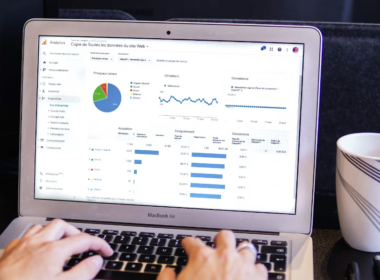In today’s competitive business landscape, organizations are constantly striving to streamline their operations and maximize efficiency. One crucial aspect of efficient operations is the procure-to-pay (P2P) process, which encompasses all the steps involved in obtaining and paying for goods and services.
Effective management of the procure-to-pay process is essential for organizations to achieve cost savings, maintain strong supplier relationships, mitigate risks, and ensure compliance. In this post, we’ll delve into the importance of mastering the P2P process and explore the various benefits it brings to organizations to implement a P2P solution.
Streamlining Procurement
The procurement phase is a fundamental component of the P2P process. Efficient procurement management enables organizations to strategically source suppliers, negotiate favorable terms, and ensure the timely availability of goods and services. By implementing streamlined procurement practices, organizations can achieve significant cost savings through bulk purchases, competitive bidding, and effective supplier relationship management.
Additionally, optimized procurement processes minimize the risk of fraud and non-compliance, ensuring that purchases adhere to regulatory and legal requirements.
Optimizing Purchase Orders
The purchase order (PO) phase plays a critical role in the P2P process. Effective PO management improves accuracy and visibility in purchasing activities, facilitating better control over expenditures. By implementing automated systems for PO generation, approval, and tracking, organizations can minimize errors and discrepancies.
Furthermore, efficient PO management reduces approval and processing times, enabling faster order fulfillment and enhancing overall operational efficiency.
Streamlining Receiving and Invoicing
Efficient management of the receiving and invoicing stages is essential to maintaining the smooth flow of the P2P process. Organizations need to ensure that goods and services received are accurately recorded and matched against purchase orders. This enables timely payment processing, reducing delays, and maintaining positive supplier relationships.
By streamlining the receiving and invoicing processes, organizations can prevent duplicate payments, identify billing errors, and optimize cash flow management.
Achieving Cost Savings and Financial Control
Efficiency improvements in the purchase-to-pay process can lead to significant cost reductions, particularly in the accounts payable/expense reimbursement segment. This specific area alone accounts for a substantial 12% of all finance function full-time equivalent (FTE) resources.
By enhancing efficiency in P2P, organizations can directly lower their overall process costs and optimize resource allocation within the finance function. By implementing standardized purchasing procedures and leveraging spend analysis tools, organizations can reduce maverick spending and unnecessary purchases. This ensures that procurement activities align with budgetary constraints and strategic goals.
Furthermore, improved budgeting and forecasting capabilities enable organizations to make informed decisions and allocate resources effectively. Taking advantage of discounts and early payment options can also lead to cost savings, as organizations can optimize cash flow and capitalize on favorable supplier terms.
Enhancing Supplier Relationships
Efficient management of the P2P process is not only crucial for internal operations but also plays a significant role in enhancing supplier relationships. By implementing streamlined processes, organizations can foster improved communication, collaboration, and transparency with their suppliers. This, in turn, builds trust and paves the way for better negotiations on pricing, terms, and conditions.
Furthermore, strong supplier relationships offer additional benefits such as opportunities for innovation, joint problem-solving, and the potential for long-term partnerships. When organizations effectively manage their P2P processes, it results in improved service levels and delivery performance. Both the organization and its suppliers benefit from this synergy, as it leads to increased efficiency and mutual success. Effective P2P process management, therefore, serves as a catalyst for cultivating and nurturing valuable relationships with suppliers.
Mitigating Risks and Ensuring Compliance
Risks and compliance issues are inherent in the procurement process. Effective P2P process management helps organizations identify, mitigate, and manage these risks. By implementing robust controls and verification mechanisms, organizations can detect and prevent fraudulent activities such as unauthorized purchases or supplier collusion.
Compliance with regulatory and legal requirements is crucial to avoid penalties and reputational damage. Additionally, maintaining accurate audit trails and documentation ensures transparency and facilitates smooth auditing processes.
Leveraging Technology for Efficient P2P Process Management
Technology plays a vital role in achieving efficient P2P process management. Organizations can leverage technology solutions for P2P automation, such as electronic procurement systems and invoice processing software. These technologies streamline the P2P process by automating repetitive tasks, improving accuracy, and reducing manual intervention.
With real-time data visibility and analytics, organizations gain insights into their purchasing patterns, supplier performance, and cost-saving opportunities. Integration of P2P systems with other business systems, such as enterprise resource planning (ERP) software, further enhances operational efficiency and facilitates seamless information flow.
Final Thoughts
Efficient P2P process management drives organizational success. It streamlines procurement, optimizes purchase orders, and manages receiving and invoicing effectively, resulting in cost savings, financial control, and stronger supplier relationships. It also mitigates risks, ensures compliance, and provides decision-making visibility. Leveraging technology further enhances P2P processes. It’s crucial for organizations to prioritize and invest in P2P optimization to reap the long-term benefits it offers in today’s competitive business environment.
















